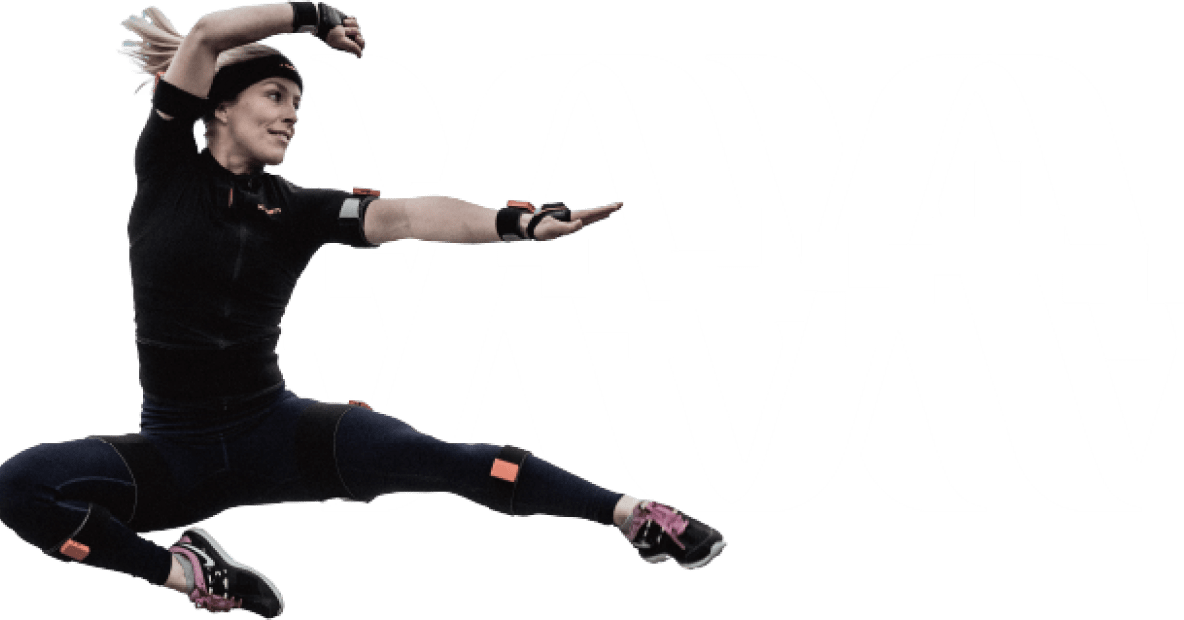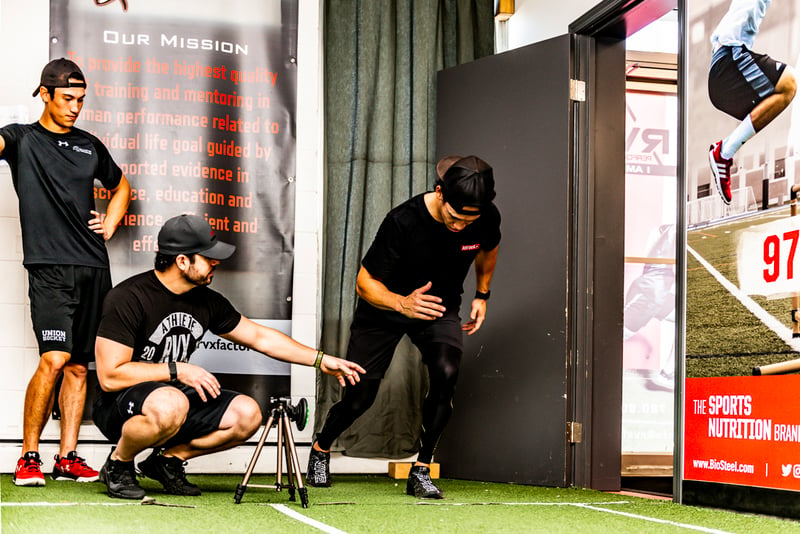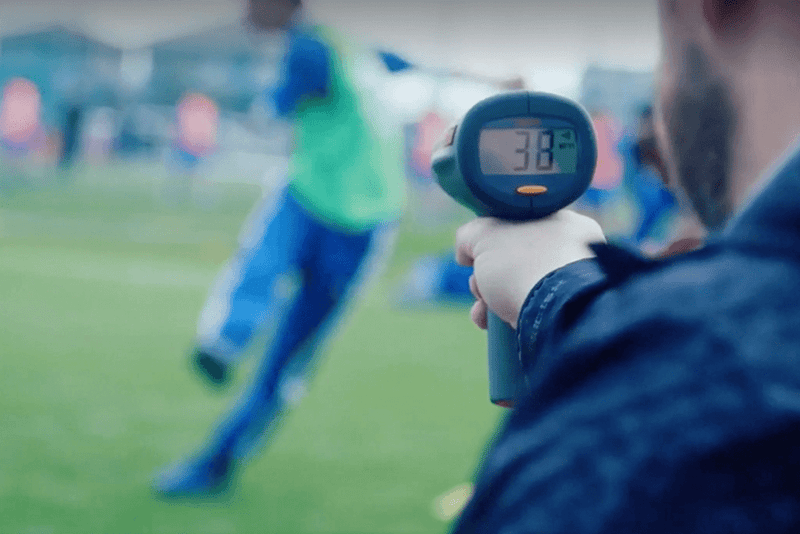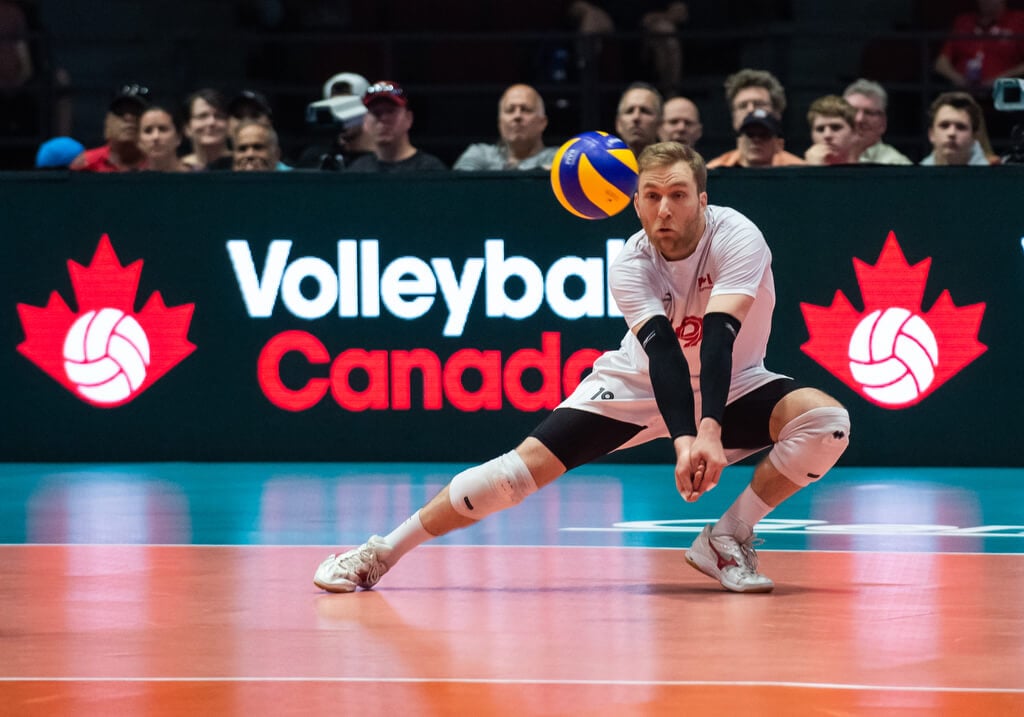
Volleyball Canada - A Unified Athlete Monitoring Strategy from Coast to Coast to Coast
25th March 2022
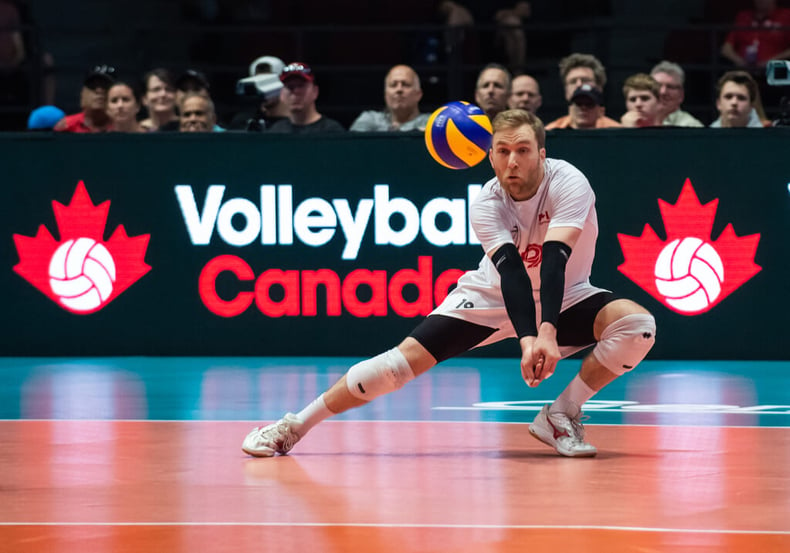
(photo courtesy of Volleyball Canada)
Like its name suggests, Volleyball Canada is the governing body for the nation’s volleyball efforts. The National Sporting Organization oversees 12 teams in total, including Canada’s men’s and women’s national senior teams, sitting volleyball, and the country’s Next Gen rosters.
Since 2020, Volleyball Canada has been using Kinduct’s Athlete Management System to help consolidate data, monitor athletic health and performance, and communicate efficiently across the country.
In this case study, we spoke to Melissa Healy, Athletic Therapist and Medical Coordinator, and Michael Cook, Lead of both Integrated Support Team (IST) and Strength and Conditioning for the Men’s Indoor Program.
Below we will dive into how decentralized athletes affect each of their roles, their methods of implementing monitoring and training best practices, how an athlete management supports those methods, and the thinking behind their plans for the future.
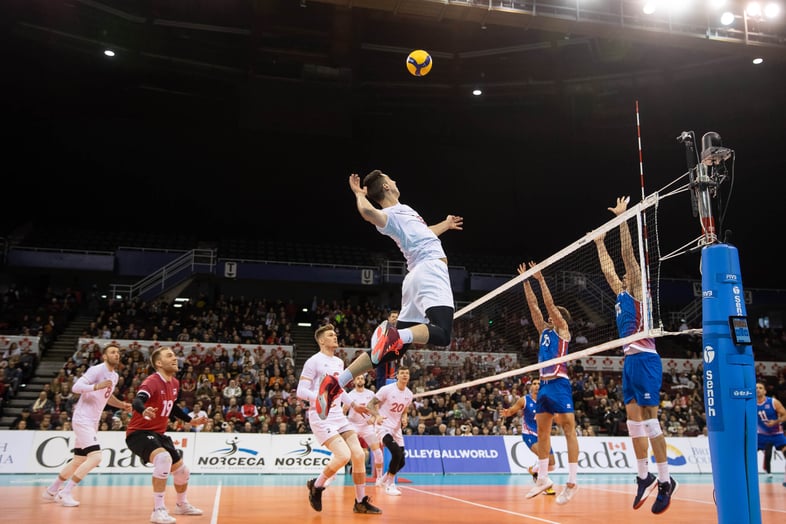
(photo courtesy of Volleyball Canada)
The Challenge: Monitoring Athletes Remotely from Coast to Coast to Coast
Volleyball Canada is not immune to the challenges that many NSOs and NGBs face, which is decentralized athletes. For Melissa and Michael, the athletes in their care are away training and competing for their respective professional and university-level teams for roughly half the year.
It’s a challenge, but one they’re able to deal with through regular check-ins.
“We try not to be overbearing with our athletes but have a regular monthly check-in questionnaire and the information from this check-in allows us to support athletes in specific areas of need. This could be injury related, mental performance related, nutrition related, etc.”
This information is also used to inform the staff as they ramp up their planning for the summer season.
“Being able to send out the intake forms to complete before the athletes report to training is much more efficient with Kinduct,” Melissa says. “We’re easily able to share reports from all of this information with the coaching and performance staff, monitor performance metrics, and keep our doctors and therapy staff in the loop.”
When the athletes are away is also a time for staff to reflect on their internal process; how they’re streamlining data and using it to inform their training cycles, looking for ways to refine what projects and reports they currently have and how they can be improved to better serve their goals.
Due to Volleyball Canada’s remote nature of Volleyball Canada, having a platform with a hierarchical structure makes things easy. Users like Michael and Melissa can log in just once but have access to multiple rosters upon doing so. This includes teams from the senior national level to U19 and more.
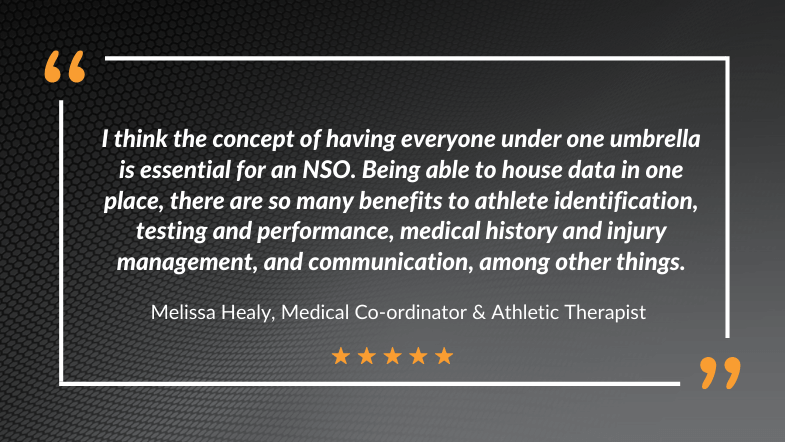
The Opportunity: Creating a Unified Strategy
Michael’s philosophy is that effective data leads to not just any type of conversation with athletes and coaches, but rather informed and precise ones — conversations that help align performance strategies.
This philosophy is supported and made easier by having the required data in one place and readily available.
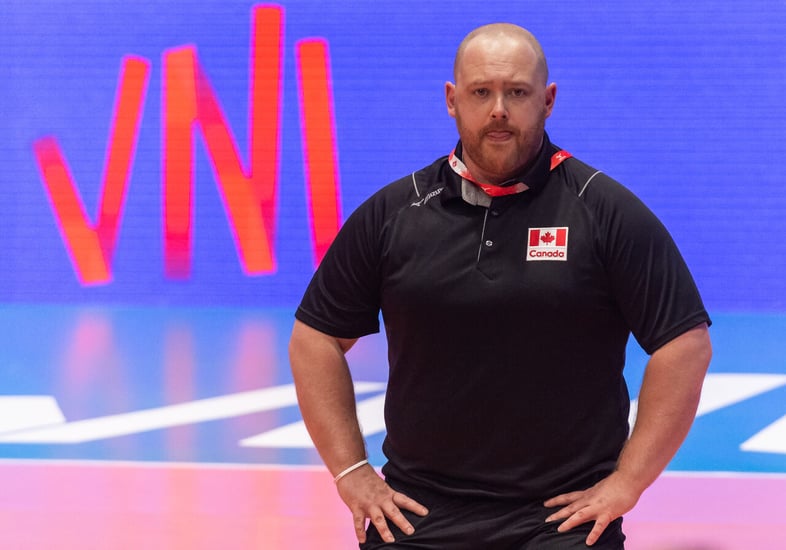
(photo courtesy of Volleyball Canada)
The Kinduct Athlete Management System ensures that for Michael and Melissa, despite their different roles and area codes, the survey results, jump profile reports, or treatment charts are there when they need it.
On the Strength and Conditioning side of things, Michael can review data from the technology he uses to measure readiness and fatigue and adjust daily training accordingly.
For Melissa, as an Athletic Therapist, Kinduct’s Electronic Medical Records (EMR) enables her to chart any athletes she’s worked on, send secure surveys, and monitor health and recovery, even when the organization is decentralized and outside of their competitive season.
The Input: What Data is Being Collected
The Daily Pain Survey is a tool that Melissa relies on heavily to help inform her day-to-day duties.
She says the pain scores are reflective of the chronic issues they tend to see in volleyball. The survey allows her to capture information on shoulder pain (swinging arm), low back pain, and knee pain, while also including a body map option where athletes can report soreness or pain in another location outside what they call the “Big 3.”
What’s more, athletes are given an option to “comment” on the data they’ve submitted, meaning they can provide detail and context around anything they might have reported that day.
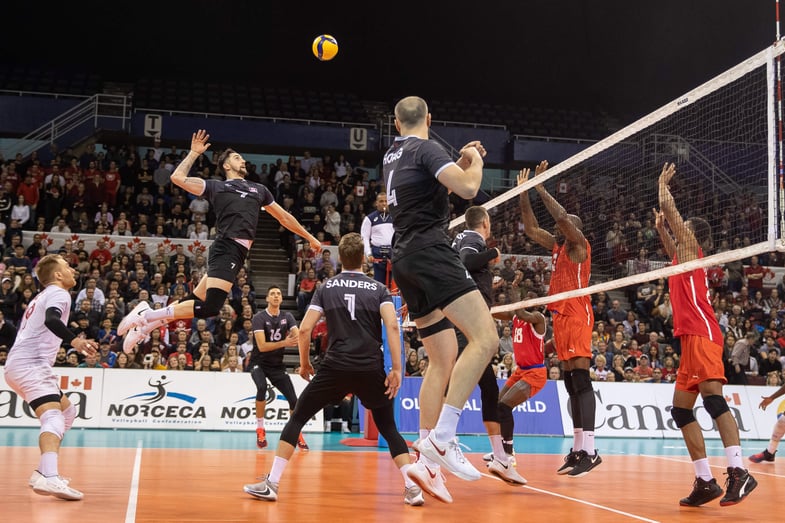
(photo courtesy of Volleyball Canada)
For example: “If they think a minimal pain reported is because they slept funny, this ‘comment’ section gives them a chance to notify us of anything else that they might want to talk about with the staff.” Melissa says, “We normally chat with players in the gym before training, and the morning reports can help us prioritize who we connect with first, or what we need to clarify or address with them that day.”
Michael, on the other hand, leverages third-party data sources from Hawkin Dynamics force plates and VERT, whose data is made available in the Kinduct Athlete Management System and visualized in customized performance reports.
The Output: What’s Being Done with the Data
The data that’s being brought into Volleyball Canada’s Kinduct platform helps inform training so the group can hit the ground running when a new training period begins.
Michael says that having the data from sources like Hawkin Dynamics and VERT readily available allows him and the coaching staff to cross reference what they observe with the naked eye with objective data.
“It could be something along the lines of an athlete looking slow when they approach jump or that they do not look fast when moving laterally at the net. We can then look at our force plate data for both situations in relation to metrics of interest that help us paint a picture of what’s maybe happening in terms of fatigue and/or targeted areas of improvement.”
Michael also uses the force plates for on-going monitoring throughout the year, stating: “Our athletes perform a Counter Movement Jump (CMJ) on day one of the training week, and then the day before the match or at the end of a microcycle. From this profile, we then identify gaps that we can target during training.”
For load monitoring, VERT data is used to understand the acute and chronic jump loads that an athlete has recently experienced and is about to experience, which both Michael and Melissa monitor.
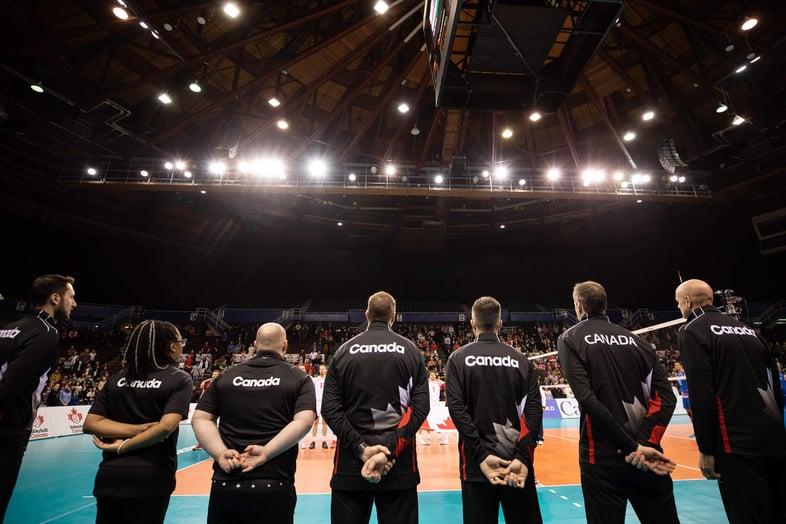
(photo courtesy of Volleyball Canada)
Each day, Melissa cross references the jump counts with pain scores.
“If someone has an injury we’re managing,” she explains, “I check to see if their jump volume from the day before correlates to the pain score that was reported, or if we had intentionally pushed them the day before, did any pain settle to an acceptable range by the next morning.
“If someone reports pain in a concerning range, I’ll look at their jump volume with the coach to see if that matches with the training phase they’re in. Sometimes it’s expected that they’ll be sore or flare up for a few days, but if the jump count is low and their pain is high, that’s more concerning. It becomes a larger conversation with the staff and the athlete.”
And despite the distance that may be between staff and athlete, having an organized athlete management system helps make that easier.
The Future: Standardizing the Development of the Next Generation
In addition to their standard Kinduct platform, which is used to monitor the national teams, Volleyball Canada has a second Kinduct platform for their nation-wide combine efforts.
Combines are facilitated at different times throughout the year, in different locations across the country. Following an athlete's participation in one of the combines, they are given access to the Kinduct Athlete App where, the next day, they can access their results.
Combine results are visualized in an interactive report that showcases their testing data compared to the Gold Medal Standards across the various age groups within the national teams.
Michael says there are two objectives behind this testing:
"First is to provide our national athletes, particularly the Next Gen, U21, and U19 athletes, with an idea of how far away they are from our Gold Medal Standards and if there are any targeted areas for improvement.
“Second is to build normative data for our Gold Medal Profile, that helps athletes down the pathway understand what the physical capacities are required at a national team level.”
By doing so, Volleyball Canada can build and utilize custom reports to identify and monitor the potential future Team Canada Volleyball athletes as a group of high-performance coaches.
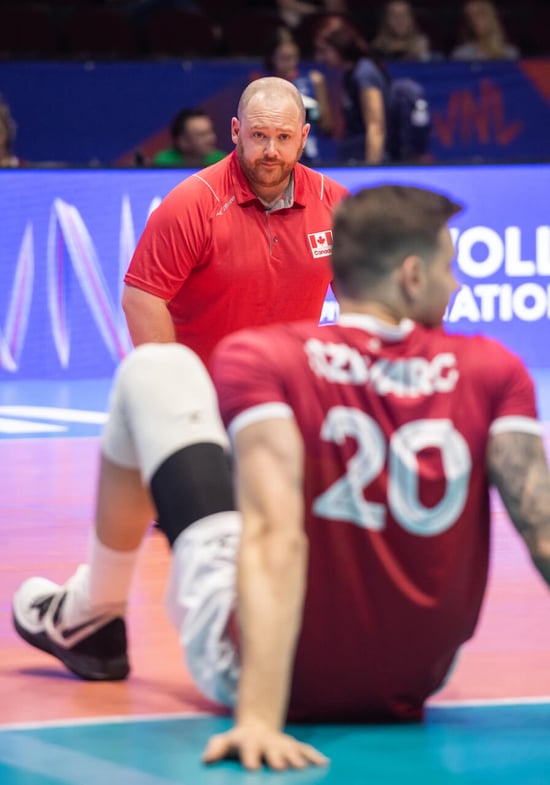
(photo courtesy of Volleyball Canada)
One immediate benefit from these efforts is the discussions they’ve had with younger athletes who narrow in on their max jump height without seeing the whole picture. Michael says this is an opportunity to show athletes the “whole story” and point out other gaps that can be addressed in their training.
The group has identified another interesting trend as well.
“Of note,” Michael says, “we have found this interesting trend with our younger athletes when it comes to their lack of ability to generate braking impulse in terms of amount and rate, as compared to senior athletes. We have some thoughts as to why this might happen, and it has helped us spread a message to those age groups in terms of training targets.”
Related articles
Newsletter
Sign up here for the Movella newsletter and stay up to date about everything Movella has to offer.
